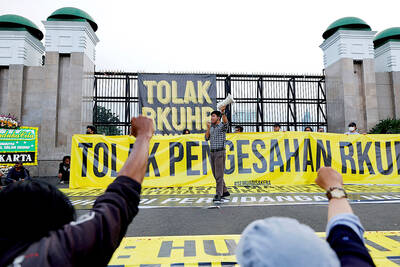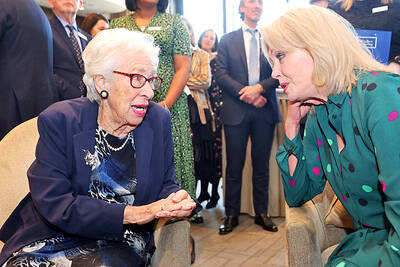The head of a team of engineering experts told a US Senate committee on Wednesday that malfeasance during construction might have been one reason for the catastrophic failure of the levees that were supposed to protect New Orleans from hurricanes.
"These levees should have been expected to perform adequately at these levels if they had been designed and constructed properly," said Raymond Seed, a professor of civil engineering at the University of California, Berkeley.
"Not just human error was involved," Seed said. "There may have been malfeasance."
Seed, whose team was funded by the National Science Foundation, did not offer hard evidence to back up his accusation. But he said after the hearing that the team had been contacted by levee workers, contractors and, in some cases, widows of contractors who told stories of protective sheet pile being driven less deeply than plans called for and corners cut in choosing soils for construction, among other problems.
His group is trying to confirm the accounts, he said, and he cautioned that even if proved, they might not be a major contributing factor in the disaster, which killed 1,000 people and left 100,000 without homes.
As experts have noted, the levee specifications may not have been adequate in the first place. In particular, pilings may not have been driven deep enough to keep them from collapsing.
But the testimony raises new concerns in the aftermath of Hurricane Katrina about the protection that New Orleans received from the 40-year US$458 million flood-control system.
The current state of repair might not protect the city from another serious storm, the engineers warned.
"Short term, without a storm, they are probably adequately safe," said Peter Nicholson, a professor of civil engineering at the University of Hawaii, who led a team of levee investigators for the American Society of Civil Engineers. "Certainly with a large storm, as we are not yet out of hurricane season, and certainly for next hurricane season, there is significant risk," Nicholson said.

Indonesia yesterday began enforcing its newly ratified penal code, replacing a Dutch-era criminal law that had governed the country for more than 80 years and marking a major shift in its legal landscape. Since proclaiming independence in 1945, the Southeast Asian country had continued to operate under a colonial framework widely criticized as outdated and misaligned with Indonesia’s social values. Efforts to revise the code stalled for decades as lawmakers debated how to balance human rights, religious norms and local traditions in the world’s most populous Muslim-majority nation. The 345-page Indonesian Penal Code, known as the KUHP, was passed in 2022. It

US President Donald Trump on Friday said Washington was “locked and loaded” to respond if Iran killed protesters, prompting Tehran to warn that intervention would destabilize the region. Protesters and security forces on Thursday clashed in several Iranian cities, with six people reported killed, the first deaths since the unrest escalated. Shopkeepers in Tehran on Sunday last week went on strike over high prices and economic stagnation, actions that have since spread into a protest movement that has swept into other parts of the country. If Iran “violently kills peaceful protesters, which is their custom, the United States of America will come to

Auschwitz survivor Eva Schloss, the stepsister of teenage diarist Anne Frank and a tireless educator about the horrors of the Holocaust, has died. She was 96. The Anne Frank Trust UK, of which Schloss was honorary president, said she died on Saturday in London, where she lived. Britain’s King Charles III said he was “privileged and proud” to have known Schloss, who cofounded the charitable trust to help young people challenge prejudice. “The horrors that she endured as a young woman are impossible to comprehend and yet she devoted the rest of her life to overcoming hatred and prejudice, promoting kindness, courage, understanding

‘DISRESPECTFUL’: Katie Miller, the wife of Trump’s most influential adviser, drew ire by posting an image of Greenland in the colors of the US flag, captioning it ‘SOON’ US President Donald Trump on Sunday doubled down on his claim that Greenland should become part of the US, despite calls by the Danish prime minister to stop “threatening” the territory. Washington’s military intervention in Venezuela has reignited fears for Greenland, which Trump has repeatedly said he wants to annex, given its strategic location in the arctic. While aboard Air Force One en route to Washington, Trump reiterated the goal. “We need Greenland from the standpoint of national security, and Denmark is not going to be able to do it,” he said in response to a reporter’s question. “We’ll worry about Greenland in